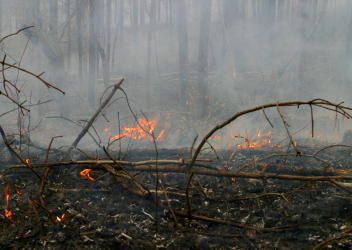
Since September, USDA Forest Service employees have been bound by a ruling in Earth Island Institute vs. Ruthenbeck that is delaying 800 projects beneficial to wildlife and people such as prescribed burns, tree thinning and work on wildlife openings. According to the ruling, projects proposed under “categorical exclusion” status are subject to the notice, comment and appeal provisions of the Appeals Reform Act of 1992.
Before the ruling, USFS employees could carry out categorically excluded projects, or projects with insignificant environmental impacts, without a review and appeals process. The appeals process could add up to 135 days before a project can be approved and implemented.
The original intent of the “categorical exclusion” status was to expedite agency work to reduce cost and time to complete high-priority work. The litigation will impede projects affecting 1.2 million acres.
According to House Committee on Agriculture Chairman Bob Goodlatte, the Forest Service believes that almost 600,000 acres of fuels treatment such as prescribed fire and tree thinning will be delayed at least through winter.
The ruling could cause burning crews to miss many of the opportunities to burn during fiscal year 2006, missing much of the 1.8 million total acres they have slated for habitat improvement. That means large amounts of dangerous, dry fuels would be allowed to build, and when introduced to fire, will burn very hot and spread very quickly.
“It is not a question of if, but when the wildfires will ignite,” testified John Hoffman, natural resources director of the Regional Council of Rural Counties, Sacramento. “Delays of any extent extends the time period communities are vulnerable to wildfire.”
Prescribed burns are safe, cool-burning and manageable fires that burn pine needles and dead branches on the ground, which can build to dangerous levels and lead to catastrophic wildfires.
Each year, state and federal land management agencies team up with nonprofit conservation groups, such as the National Wild Turkey Federation, to fund prescribed burns.
“While the lawyers are battling this ruling in court, projects that the Forest Service could be doing on the ground aren’t happening,” said Dr. James Earl Kennamer, the NWTF’s senior vice president for conservation programs. “That means a lot of wildlife habitat isn’t being improved, and because prescribed burns aren’t being done, homes and personal property is being put in jeopardy because hazardous fuels are building up. This ruling needs to be overturned.”
The decision also impacts other types of wildlife habitat projects partially funded by conservation groups such as creating and maintaining wildlife openings and tree thinning projects.

Be the first to comment